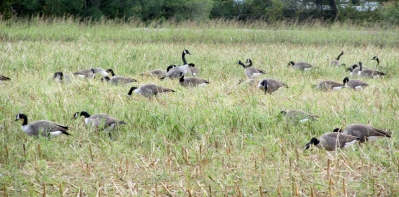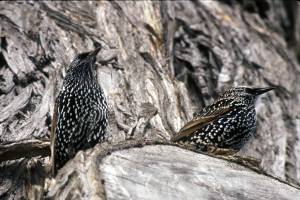
Photo by Public Domain Photos/Pixabay.com • California condors have gradually returned to parts of their range beyond California. A family of condors now resides in Zion National Park, marking a return of these birds to Utah.
Birds made headlines in 2019. Some species, having been presumed extinct, were rediscovered — some in the mostly unlikely of places. One of the major bird-related stories of the year involved a stark warning about a sharp decline in overall bird numbers. Below, in no particular order, are some of last year’s top stories about our fine feathered friends.
69 years old and a mother again
The Laysan albatross known as Wisdom and her mate, Akeakamai, became parents again in 2010. Wisdom is at least 69 years old and ranks as the world’s oldest known banded wild bird. Her mate’s name, by the way, translates as “lover of wisdom.” The chick hatched in February at Midway Atoll National Wildlife Refuge and Battle of Midway National Memorial. Wisdom has raised more than 30 chicks in her lifetime. While Laysan albatrosses are not considered endangered, some of their kin are threatened with extinction.

Photo by J. Klavitter/USFWS • Wisdom, one of Midway Atoll’s oldest residents, became a mother again in 2019. The female Laysan albatross is approaching her 70th birthday.
While walking to church
The year started with some good birding news when a bird thought extinct was rediscovered in a suburb of Medellín, Colombia, on Jan. 7, 2019. Rodolfo Correa Peña was headed to a church service when he spotted an odd bird in a garden. The bird turned out to be an Antioquia brushfinch, a bird known previously only from museum specimens. Peña, an engineering student with an interest in birding, knew the local brushfinches and recognized that the bird was different. He secured photos of the bird and stunned the scientific community with the rediscovery of a bird presumed extinct.

Photo by U.S. Fish & Wildlife Service • Endangered California condors receives some good news in 2019..
Condors soaring high
California condors continue to delight with their success stories, even extending their range beyond California. Estimates indicate that 300 condors exist in the wild with about 200 more birds in captivity for use with breeding programs. Evidence that the work to preserve the species is working was provided this year in Utah’s Zion National Park, which became home to a condor named “1K” because it is the 1,000th chick hatched as part of an extensive condor restoration program. The chick hatched in May and took a rather clumsy first flight in September. The chick represents the first condor born within Zion National Park in more than a century. In 1987, when the condor population totaled only 27 known condors, wildlife officials captured the surviving wild birds and made them part of an existing captive breeding program. In 1992, the condor recovery program started to release the birds back into the wild. There are now more condors flying free in the wild than are maintained in captivity.

Photo by Bryan Stevens
A large flock of Great Egrets flies over the Watauga River in Elizabethton. There is mounting evidence that many bird populations are on the decline.
Fewer birds?
Bird enthusiasts were shaken by the publication in September of an article warning that the number of birds in the United States and Canada has fallen by 29 percent since 1970. The analysis, published in the journal “Science,” is an extensive attempt to determine what is happening to avian populations. The results shocked — there are 2.9 billion fewer birds taking wing now than there were 50 years ago.
Hope
Yet, in words penned by poet Emily Dickinson, “Hope is the thing with feathers.” Birds are among the most resilient lifeforms on the planet. If humans can get out of the way and quit making life more difficult for the feathered inhabitants of the planet, birds are more than capable of rebounding. The federal government needs to maintain safeguards and regulations that are in place to protect birds while ordinary people must alter their ways by shunning pesticides, preserving a variety of habitats and simply giving more regard to the fellow creatures they share the Earth with. If we can do these things, the birds will be fine. Don’t take my word for it. Look at the examples of Wisdom the Laysan albatross and a California condor known as “1K.”






































